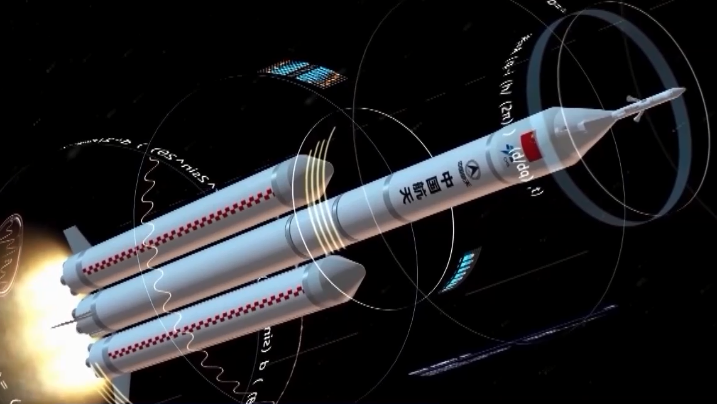LONG MARCH-10

Disclaimer: Copyright infringement not intended.
Context
- China successfully carried out a trial test on the main engine of the Long March-10.
Long March 10
- The Long March rockets are a family of expendable launch system rockets operated by the China Aerospace Science and Technology Corporation.
- Long March 10 also known as the “Next Generation crewed launch vehicle” or “921 rocket” is a Chinese super-heavy carrier rocket for crewed lunar missions that is currently under development.
- It uses 5-meter (16.4 ft) diameter rocket bodies and YF-100K engines, although with 7 engines on each of 3 cores.
- The rocket's planned launch weight is 2187 tonnes and would be capable of delivering at least 27 tonnes into a trans-lunar injection trajectory.
- The vehicle adopts a modular design, allowing for various module combinations to form a series of payloads ranging from 40 tons to 70 tons to low Earth orbit and from 10 tons to 32 tons to geostationary orbit. In the near term, it can be used for demonstration and verification missions in China's lunar exploration program, including lunar orbit and circumlunar missions.
TYPES OF EARTH ORBITS: https://www.iasgyan.in/blogs/types-of-orbits-explained#:~:text=Orbital%20inclination%20is%20the%20angle,opposite%20direction%20of%20Earth's%20spin.
|
PRACTICE QUESTION Q. Consider the following statements. 1. A geostationary orbit is extremely valuable for weather monitoring because satellites in this orbit provide a constant view of the same surface area. 2. Of the five Lagrange points in the Sun-Earth system, only the last two, called L4 and L5, are stable. 3. A satellite in a Molniya orbit takes 12 hours to complete its orbit, but it spends about two-thirds of that time over one hemisphere. 4. Satellites that are destined for geosynchronous (GSO) are almost always put into a Geostationary Transfer Orbit (GTO). Which of the above statements is/are correct? (a) 1 only (b) 2 and 3 only (c) 3 and 4 only (d) All of the above. Correct Answer: (d) All of the above. TYPES OF EARTH ORBITS: https://www.iasgyan.in/blogs/types-of-orbits-explained#:~:text=Orbital%20inclination%20is%20the%20angle,opposite%20direction%20of%20Earth's%20spin. |




1.png)
